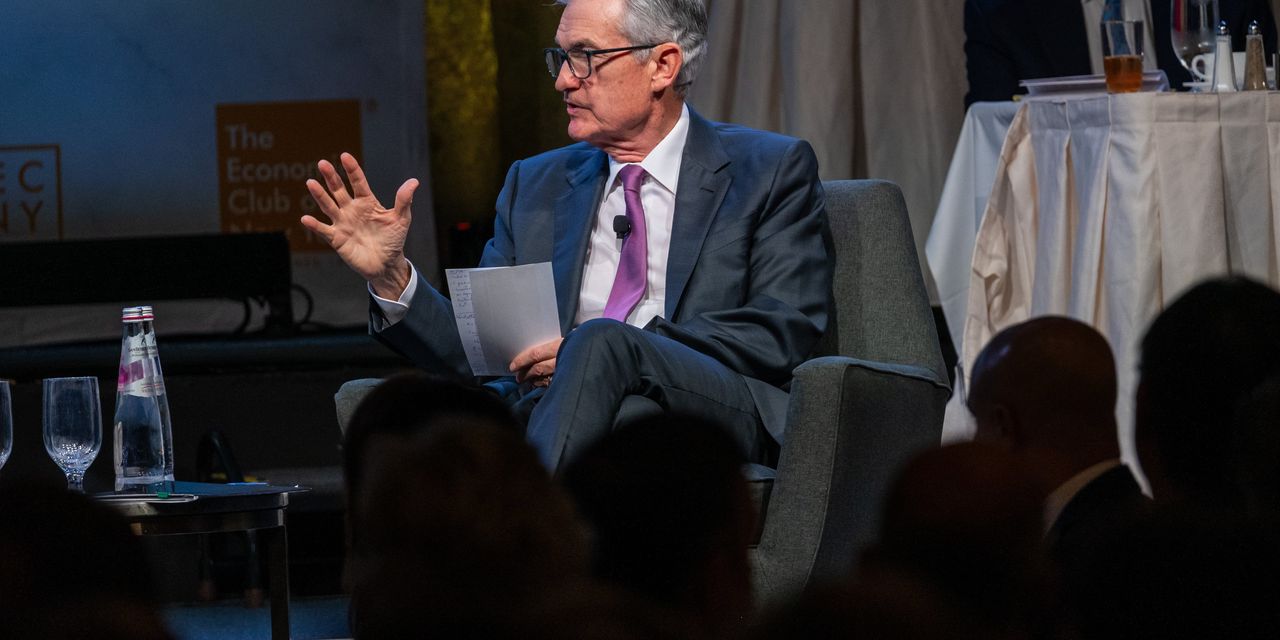There’s a widening gulf in expectations between financial markets and the Federal Reserve centered on traders’ doubts that the central bank will be able to stick with its higher-for-longer theme on interest rates.
Data over the past two days points to a U.S. economy with plenty of momentum left, with third-quarter U.S. economic growth and the monthly headline PCE inflation for September each coming in higher than expected. Nonetheless, fed funds futures traders stuck with a 78.6% likelihood of no Fed action by December.
Moreover, those traders also boosted the chances of a rate cut by May, to 41.3% as of Friday. Meanwhile, Treasury yields finished little changed to slightly lower on the day, with the policy-sensitive 2-year rate
BX:TMUBMUSD02Y
falling to a two-week low of 5.01%.
See: The Fed’s Mission Isn’t Done. Its Hawkishness Will Keep Surprising Investors.
It’s not uncommon to have a divergence of expectations between the market and the Fed, with traders continuing to rely on a much-talked-about U.S. recession to cool inflation. Only this time around, it’s occurring against the backdrop of a war in the Middle East, which is raising the risk of an oil shock, and with evidence growing that inflation is taking its time to get back to the Fed’s 2% inflation target.
Read: The market is almost always wrong about what the Fed will do next, Wall Street economist warns
“There really is a dislocation and gap between what the market is telling us and what the Fed is telling us,” said Adam Turnquist, chief technical strategist for Charlotte, N.C.-based LPL Financial. “Those two will eventually converge, but until then there will be more volatility and a game of chicken going on.”
Via phone on Friday, Turnquist said “the market was expecting that, at this time of the year, we would be talking about when the Fed is cutting rates. But the Fed has been steadfast and hasn’t changed its tone much at all. If I think about why policy makers would cut rates, they would be cutting rates because of a recession or if they are more or less claiming victory on inflation” — neither of which has happened yet.
Indeed, one forecast from within the central bank — the Atlanta Fed’s GDP Now estimate — pointed to a 2.3% growth rate for the fourth quarter as of Friday.
In addition, the Fed’s favorite inflation gauge, known as PCE price index, showed a greater-than-expected 0.4% monthly gain in the headline inflation rate for September and a 0.3% gain in the narrower monthly core gauge, the latter of which “is certainly cause for concern,” said Will Compernolle, a macro strategist for FHN Financial in New York. Monthly increases of 0.2% in core inflation are what’s needed “to sustain the Fed’s longer-run target of 2% year-on-year inflation.”
U.S. stocks finished mostly lower on Friday after September’s PCE report, with the Dow Jones Industrial Average
DJIA
falling 366.71 points or 1.1%. The S&P 500
SPX
also closed in correction territory, down 10% from the 4,588.96 level it reached on July 31, 2023.
The S&P 500 fell below 4,181 on Thursday and “needs to get back up to 4,200 for sentiment to get better,” said Turnquist of LPL Financial. He regards 4,050 — a level last seen in March and May — as a “key retracement level” that should provide some support for stocks and which may coincide with a “logical bounce.”
It’s too soon to say whether the 10-year yield’s intraday high of 5.022% on Monday represents a peak level for the long-term rate, Turnquist said. And until then, “it’s going to be hard for equities to gain any major traction until we get stabilization or a meaningful pullback on yields.”
Read the full article here













Leave a Reply